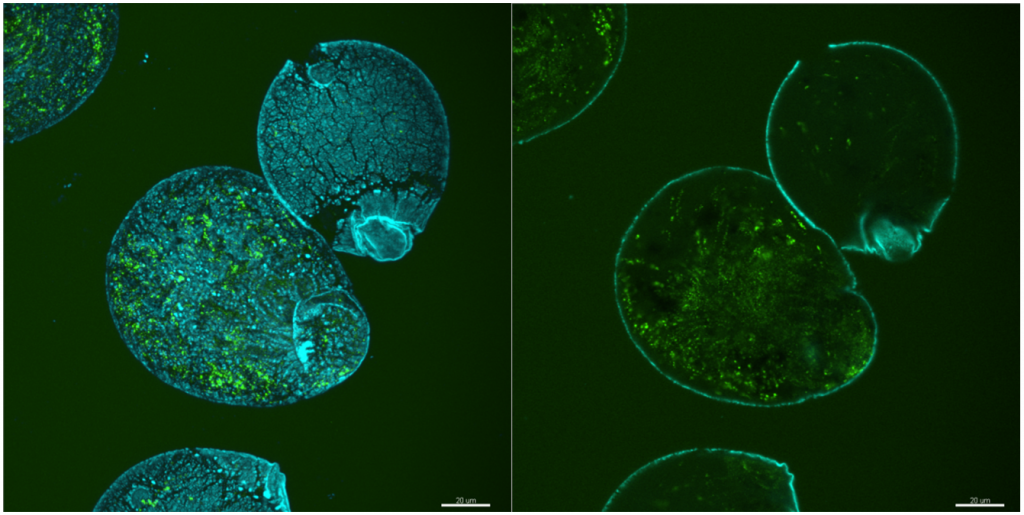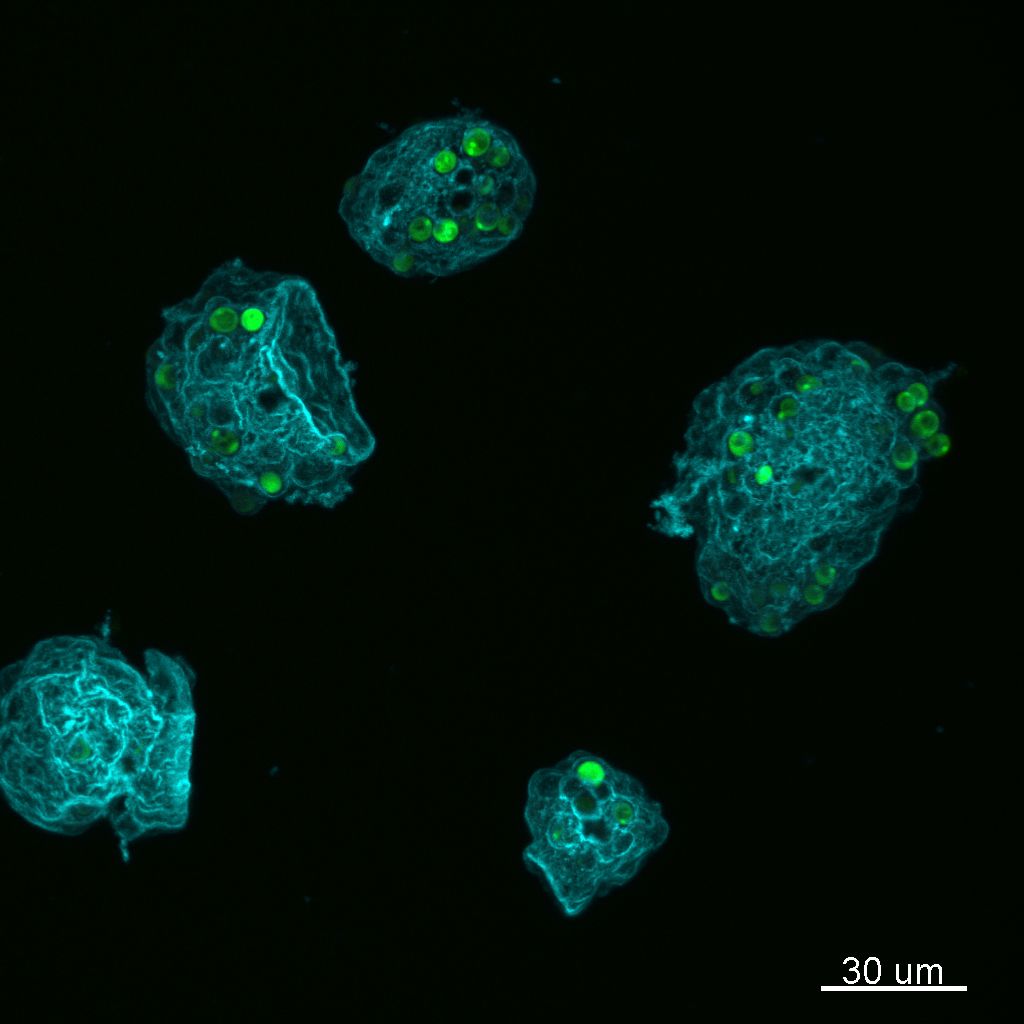Haufová Petra, Jiří Dohnal, Aleš Zadražil, Jaroslav Hanuš, František Štěpánek
The sol-gel method is a wet-chemical technique widely used in the fields of materials science and ceramic engineering. Typical precursors are alkoxides which undergo various forms of hydrolysis and polycondensation reactions.
The aim of our work is to produce silica-coated alginate particles with specific controllable shell structure for applications in drug and other chemicals delivery. In this case the organo-silica shell has been formed by a sol-gel process using the following alkoxysilane precursors: aminopropyltrimethoxysilane – AMPS, tetramethoxysilane – TMOS.
Using the sol-gel process, after hydrolysis and polycondensation of these precursors, a thin silica shell precipitates on the alginate cores. Silica shell is flexible and porous. The thickness of the deposited silica layer can be influenced by the quantity of the precursors (AMPS and TMOS). For the visualisation, pre-synthesised fluorescent silica nanoparticles can be incorporated into the newly formed silica shell.
Characterization of silica coating is done by image analysis (optical microscopy, scanning electron microscopy and laser scanning confocal microscopy) and the porosity is studied by the release kinetic of molecule with different molecular weight.
Silica shell gives the hydrogel particle mechanical and chemical resistance, can regulate diffusion into and out of the internal volume, and provides a possibility for further surface modification for selective adhesion.

3D (left) and cross section (right) images of silica-coated microparticle with fluorescent silica nanoparticles (blue – fluorescent dye DEAC) and enclosed lipozomes (green – fluorescent dye FITC).
Publications
- Sarvašová N., Ulbrich P., Tokárová V., Zadražil A., Štěpánek F., “Artificial swarming: towards radiofrequency control of reversible micro-particle aggregation and deposition”, Powder Technol. 278, 17-25 (2015)
- Haufová P., Knejzlík Z., Hanuš J., Zadražil A., Štěpánek F., “Reversible buckling and diffusion properties of silica-coated hydrogel particles”, J. Coll. Interf. Sci. 357, 109-115 (2011).
- Haufová P., Dohnal J., Hanuš J., Štěpánek F., ”Towards the inkjet fabrication of artificial cells”, Coll. Surf. A 410, 52-58 (2012).


